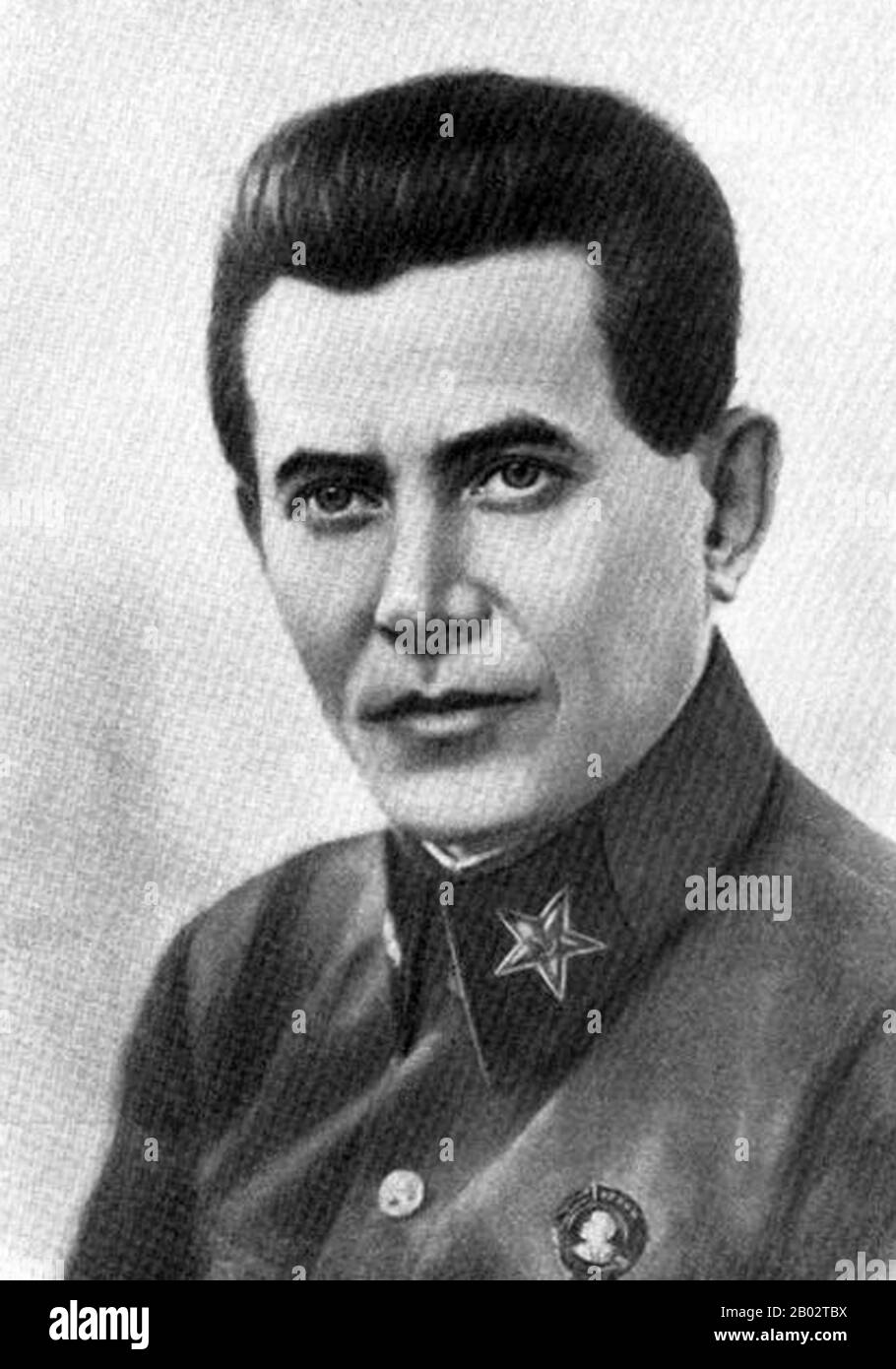Nikolai Yezhov's time in charge is sometimes known as the 'Yezhovshchina' ('the Yezhov era'), a term coined during the de-Stalinization campaign of the 1950s. After presiding over mass arrests and executions during the Great Purge, Yezhov became a victim of it himself. He was arrested, confessed under torture to a range of anti-Soviet activity, and was executed in 1940. By the beginning of World War II, his status within the Soviet Union became that of a political non-person. Among art historians, he has the nickname 'The Vanishing Commissar' because after his execution, his likeness was reto

Image details
Contributor:
CPA Media Pte Ltd / Alamy Stock PhotoImage ID:
2B02TBXFile size:
50 MB (866.3 KB Compressed download)Releases:
Model - no | Property - noDo I need a release?Dimensions:
3500 x 4995 px | 29.6 x 42.3 cm | 11.7 x 16.7 inches | 300dpiDate taken:
15 April 2015Photographer:
Pictures From HistoryMore information:
This image could have imperfections as it’s either historical or reportage.
Nikolai Yezhov's time in charge is sometimes known as the 'Yezhovshchina' ('the Yezhov era'), a term coined during the de-Stalinization campaign of the 1950s. After presiding over mass arrests and executions during the Great Purge, Yezhov became a victim of it himself. He was arrested, confessed under torture to a range of anti-Soviet activity, and was executed in 1940. By the beginning of World War II, his status within the Soviet Union became that of a political non-person. Among art historians, he has the nickname 'The Vanishing Commissar' because after his execution, his likeness was retouched out of an official press photo; he is among the best known examples of the Soviet press making someone who had fallen out of favor 'disappear'.